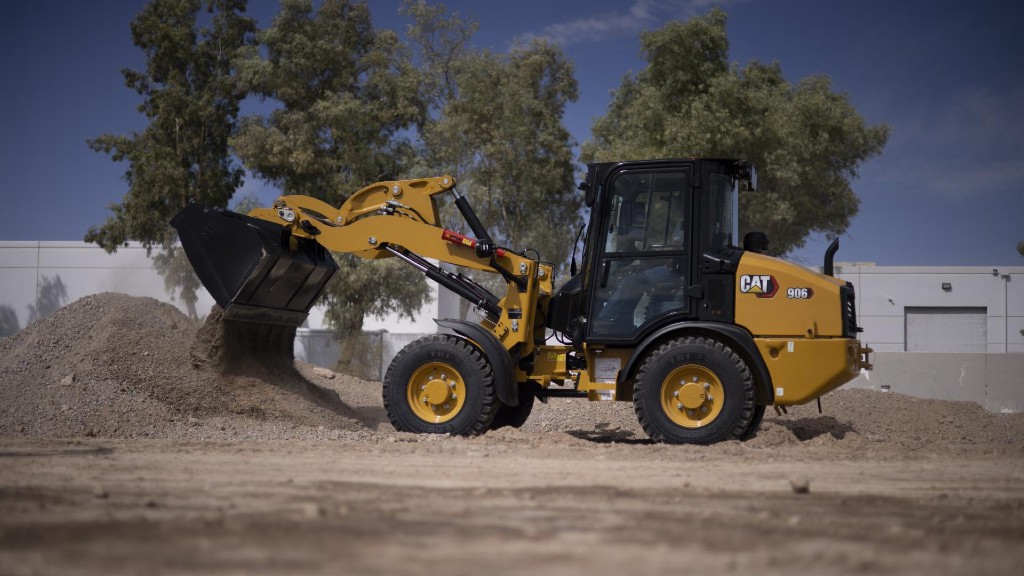Komatsu and Moog to demonstrate all-electric compact wheel loader prototype at bauma 2022

Moog Inc. and Komatsu have collaborated to build a fully electric compact wheel loader. The companies will demonstrate the connected and automation-ready, zero-emission, battery-powered machine at bauma 2022 from October 24 to 30 in the Komatsu demo area.
Moog's machine electrification system includes an electric traction motor; lift, tilt, and steering electric cylinders; power electronics; system control computer; battery; and battery management system. The integrated software acts as the system's brain to connect and intelligently coordinate actions across the machine while the all-electric actuators and motors provide the muscle. The integrated nature of the system enables ideal efficiency and controllability.
Komatsu provided the vehicle-level design and assembly, including structural configurations that take advantage of Moog's intelligent machine electrification system.
"To achieve our CO2 emission reduction targets from products in use 50 percent by 2030 from 2010 levels, to achieve carbon neutrality by the end of 2050, we are looking for promising technologies from suppliers to accelerate our electric machine development," says Seiichi Fuchita, chief technology officer (CTO) and president of the development division at Komatsu. "The machine, built together with Moog, combines the strengths of both companies, and was finalized within a short period of time. We expect the joint testing will show the advantages of a fully electric machine and will prove collaboration is beneficial for both sides."
By seamlessly integrating multiple subsystems including power management, motion control, connectivity, and automation, the Moog system enables OEMs to develop their own differentiated offerings and bring next-generation machines to life, while decreasing development costs and the time to bring products to market.
The companies plan to jointly test the all-electric loader after bauma 2022 to further prove the concept, which Moog and Komatsu expect will achieve a new level of efficiency, operating time, and comfort. The companies joint tests will show they have extended the machine's operating cycle and, with assist functions, provided a comfortable environment for the operators to manage the machines and their day.
Moog has a history of converting hydraulic systems to electric in industries including aerospace, defense, and industrial machinery for applications including simulators for air, sea, and land vehicles. Leveraging this expertise, Moog's electrification system will help Komatsu control not only the loader's motion but also its energy use to enhance run-time and cut maintenance costs compared to diesel alternatives.
"Our focus is accelerating electrification, automation, and connectivity by enabling the world's safest, most sustainable, and most productive machines," said Joe Alfieri, vice president and general manager for Moog's construction business unit. "Our cooperation with Komatsu shows that industry leaders in the construction industry are ready for zero-emission machines and we are thrilled to collaborate with them to enable their journey with our production-ready electric, connected and automation systems."
Moog's intelligent machine electrification system is designed to be connected, automation-ready and ready to scale to production. The system has the sensing and control capabilities needed for automation while the integrated software framework comes with built-in tools to coordinate multiple axes of motion and precisely control torque, velocity, position, and force.
"To achieve our CO2 emission reduction targets from products in use of 50% by 2030 from 2010 levels, to achieve carbon neutrality by the end of 2050, we are looking for promising technologies from suppliers to accelerate our electric machine development," said Seiichi Fuchita, Chief Technology Officer (CTO) and President of Development Division Komatsu. "The machine built together with Moog combines the strengths of both companies and was finalized within a short period of time and we expect the joint testing will show the advantages of a full electric machine and will proof collaboration is beneficial for both sides."



